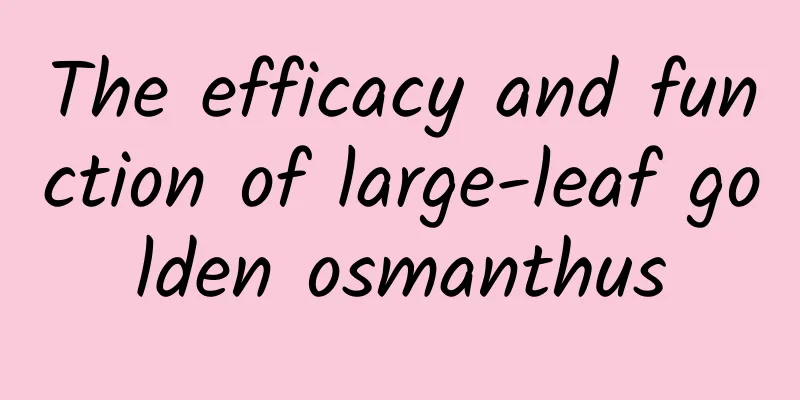The efficacy and function of Gynura serrata

|
Diseases require improvement through medicine. Different diseases require different medicine choices. If you want to treat your disease well, you need to use the right medicine. The traditional Chinese medicine Guizhutangjie is also very helpful in treating certain diseases. Let’s take a look at this medicinal herb. [Alias] Calendula officinalis, Marigold (Inner Mongolia Chinese Herbal Medicine), Xiheri-Heqi (Mongolian name). [Source] It is the whole herb of the cruciferous plant Glechoma longituba . Harvest in summer and autumn and dry in the shade. [Original morphology] Annual or biennial herb, 30 to 150 cm tall, with two or three-pronged hairs on the whole plant. The stem is erect and branched at the top. Simple leaves are alternate; linear or lanceolate, slightly pointed at the apex, wavy at the margin or with shallow and long notches, gradually narrowing at the base; nearly sessile. The racemes are terminal and axillary; the flowers are small; there are 4 petals, yellow, spoon-shaped, and arranged in a cross; there are 6 stamens, 4 long and 2 short. The silique is cylindrical, about 1 to 2 cm long, with edges, and dehisces when ripe. The fruit stalk is short, the false septum is paper-like, and there is a row of seeds in each chamber. The seeds are small, flat oval, and yellowish brown. Flowering period is from April to June. Fruiting period is from May to July. [Habitat distribution] It grows wild in grasslands, field edges, hillsides and roadsides. Except for South China, it is distributed almost all over the country. [Chemical composition] The whole plant contains cardiac glycosides such as glucoside, scutellaria glycoside A, xylose scutellaria glycoside, xylose scutellaria glycoside, and scutellaria glycoside. 【Pharmacological action】 ① Cardiotonic effect 【Nature and flavor】 Sour and bitter, neutral, slightly toxic. 【Functions and indications】Strengthens the heart and promotes diuresis, invigorates the spleen and stomach, and helps digestion. Treat palpitations, edema, and indigestion. [Usage and Dosage] For oral use: decoct in water, 1 to 3 qian; or grind into powder 1 to 2 fen. [Additional prescription] ① To treat cardiac edema: 2 qian of sugar mustard, decocted in water; or grind into powder 1 to 2 fen, take twice a day. [Remarks] The seeds of this plant are used as tianlizi in some areas such as Shandong and Hebei, also known as bitter tianlizi, see the entry for "tianlizi". 【Excerpt】 《*Dictionary》 [Source] From "Northeast Medicinal Plants" The effects and functions of Ginseng sinensis have been described in detail above, and I believe everyone has a certain understanding of it. However, whether Ginseng sinensis has other therapeutic effects still requires further research. |
<<: The efficacy and function of Guizhou Swertia japonica
>>: The efficacy and function of leopard eye fruit
Recommend
The efficacy and function of Euryale
Euterpe is a common Chinese medicine with many di...
Don't eat this fruit! "Mycotoxins" are no joke...
Many of us have had this experience: we bought a ...
Its selenium content is 41.7 times that of an apple! Fruit cores are also very nutritious, but unfortunately many people throw them away...
Jackfruit, have you eaten it this year? Many peop...
Chinese astronauts set new record for extravehicular activities
On September 17, Cai Xuzhe and Chen Dong successf...
Who is the "murderer" in the down jacket explosion incident? There may be more than one truth!
Recently, there have been reports of down jackets...
What are the effects and functions of cockscomb
Cockscomb is now used to help treat leucorrhea, o...
The efficacy and function of Ai tablets
Mugwort tablets have the effects of refreshing th...
The efficacy and function of Radix Trichosanthis [Picture]
Although Western medicine and Western drugs are m...
The efficacy and function of silver fern
What are the effects of silver fern? As a traditi...
What are the differences between raw Polygonum multiflorum and processed Polygonum multiflorum?
Everyone hopes to have a healthy body and a good ...
The efficacy and function of bonnet fern
Bone fern is a kind of traditional Chinese medici...
Ancient DNA finds answers to the mystery of cattle’s origin and domestication from prehistoric traces (Part 2)
Produced by: Science Popularization China Author:...
Cordyceps sinensis
Among Chinese medicinal materials, Cordyceps sine...
The efficacy and function of green bark tree
Qingpi tree is a traditional Chinese medicine. It...







![The efficacy and role of Xiao Guanzhong [picture]](/upload/images/67ca1c595b16a.webp)

